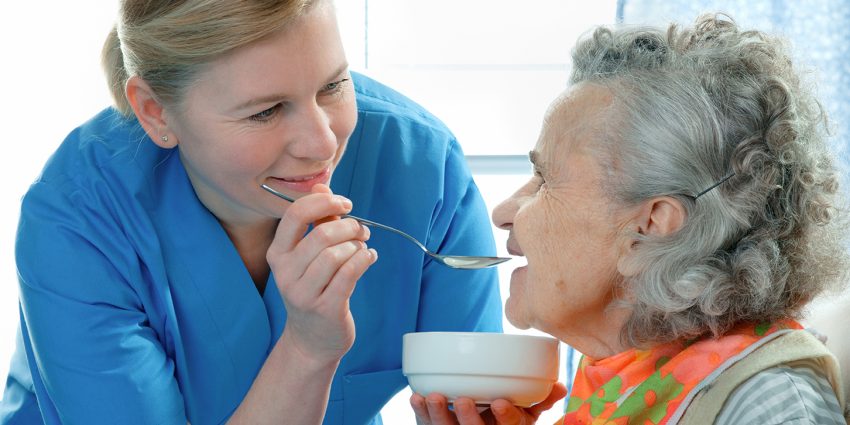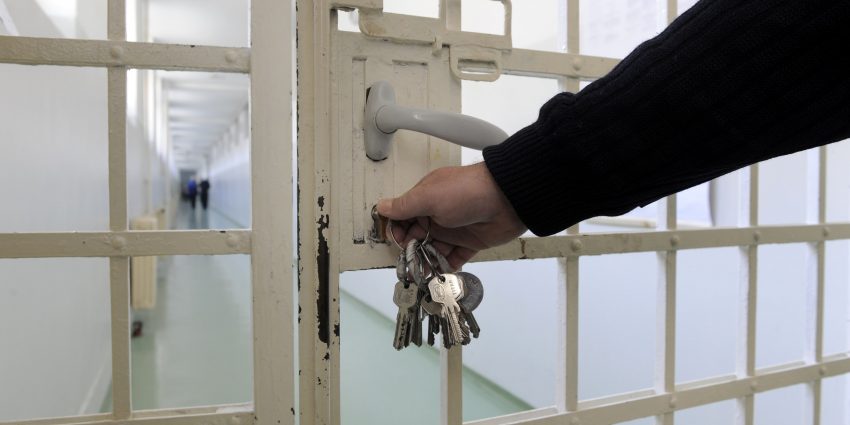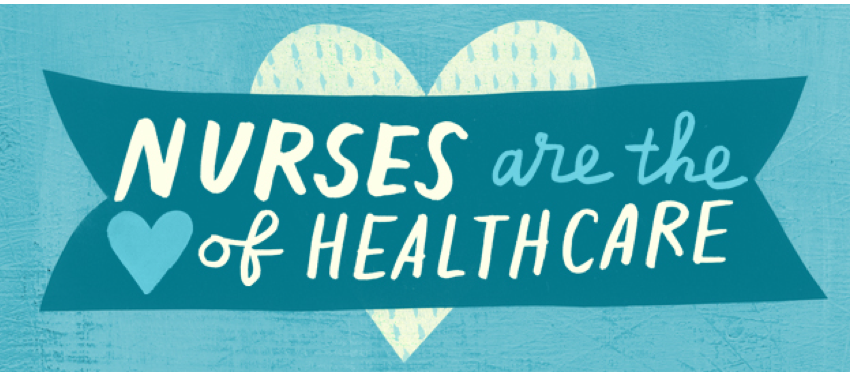Post Views: 3,114
ViewsReal Life Scenarios: Developing the “Michael Phelps” of Nursing
By Christine V. Haynes, MSN, RN
Students are the inheritance of our wisdom and how we wield it to them directly correlates with the type of nurse they will be out in the field.
The number one statement I hear when I ask a student why they want to be a nurse is, “I like helping people.” My response is usually, “If that’s your only reason, then you should volunteer somewhere.”
For anyone that knows me and how emotionally driven I can be, that seems very out of character. Truth be told, this comes from a deep emotional place. I know the challenges these students will face. Challenges in their academia, clinical settings and future nursing roles. “Liking to help people” is a great spring (or should I say diving) board, but in the long run, they really need to have a desire to swim in the deep end.
How do we find out if a student has what it takes?
Well, I start every conversation with the question above followed by, “Why?” It’s always in the why that the truth comes out. “My dad had a massive heart-attack and there was nothing I could do to help him. I want to be able to help save someone else.” “When I had my baby, the nurse was so kind to me. I didn’t think I could do it but she kept telling me she was with me all the way. And she was.” “My mom was a pediatric nurse. I saw how hard she worked to take care of our family and her patients. She was tired, but always seemed fulfilled. I want to feel like that.” “My child (my sibling, my cousin) is medically fragile. I’d help all the time and the nurses told me I would make a great nurse and I think I will be.”
These are just a few of the quotes I’ve heard over the years. These are the lines that tell me the student knows the water they are about to dive into. Now it’s my job (and yours) to prepare them for the shock of the cold water and be sure they are really ready to swim.
Let’s look at the obvious, the goal of swimming is not drowning. Knowing how to breathe in the water is generally the first step. When someone is introduced to the water they are given a little floatation device and then told to put their face in the water. Quickly, the novice will learn when to hold their breath. They learn quickly that even though the nose is a resource for when your face is out of the water, it’s not to be called upon while your face is in the water! Teaching students that they have the abilities, skills and talents innately is an important first step. They need to learn to trust and control their instincts. Just as they learned quickly when to hold their breath and when to come up for air. We need to teach them how to identify between the two. We also need to ensure they keep breathing, but that’s another article.
During a class, one day a student became flustered and blurted out, “Everyone keeps saying ‘Critically think! You have to critically think!’ But how do you do that?!” And there we have the learning to swim part. When an infant is thrown into a pool, they instinctively begin to doggy paddle. They swim. Same with students. They just don’t realize they have those instincts. Through their personal life experiences, they have all their nurse-y abilities. To address the student (and now every group of students), I posed this scenario to the class: You are standing in your kitchen cooking. Someone is at the front door, your phone begins to ring and someone from upstairs is calling for you. Who do you respond to first?
I’m able to quickly identify some of my better future nurses when their response is, “We don’t have enough information to make a decision.” Yes! They’ve identified step one of the nursing process! The need to assess! The need to gather more data!
I then ask what kind of information would help them. In the next couple of minutes, the scenarios would change from: the phone is the doctor calling with results about your biopsy, the UPS driver is leaving a package and the person upstairs is out of toilet paper, OR the phone is an unknown caller, the front door is a non-urgent knock and the person upstairs is shouting in urgency. The students then make the decision of who they will tend to first. Viola! Critical thinking.
If a student responds with statements like, “I’d answer the phone because it’s closest, someone else can answer the door and that person upstairs will just have to wait,” that leads to a great conversation about the nursing role and the appropriate action and delegation.
This simple scenario has set them up for success when they are standing at the nurse’s station one day. The call bell goes off, someone is calling out to them, and they are being paged all at the same time.
Giving other everyday real life scenarios helps as well. You are running late for school, your gas light just came on and you dribbled some coffee down the front of your shirt. What do you tend to first? Identifying a need to stop for gas first becomes the critical thought. Afterall, you will be super late, or not make it at all if you run out of gas, and then who cares what you’re wearing? We then talk through how they deal with the other issues such as who to communicate to, how to keep from being in that situation again, and what resources would help. For instance, contact the instructor while the gas is being pumped, always maintain no less than half a tank (Mrs. Keane, a wise nurse educator, once said that was the best way to always reduce your stress), or always have a change of clothes in your car. Aren’t all these valid to their future nursing practice? That’s our goal. Prepared and confident nurses.
Taking common, non-clinical experiences to help students realize they already have many of the skills they need is our best course of action. Demystifying nursing and helping students relax and enjoy the process more can only benefit the nursing field as a whole. Yes, what we do is very serious business. We need students to understand that there are serious consequences when making poor/incorrect decisions. We need to point out, if the student answered the phone and tended to the door because they were closest and the easiest to deal with, the person upstairs who was calling out was suffering a heart attack and then died. Getting the seriousness across is not being swept to the side. I’m just suggesting that while they are students, we can find ways to get these points and thought processes across to them without belittling or scaring the bejesus out of them.
The truth is not all students can do this type of thinking. If the student doesn’t identify them in the classroom scenarios the need to gather more data or how to think on their feet, they have self identified who we need to keep a close eye on. These are the students that will benefit from more support to success (wearing swimmies for a bit). Some students will think they’ve “got this” tear off their life vest, flail about wasting a lot of energy/time/money-just to find themselves scooped out by the lifeguard’s hook. Either way, real life scenarios help ensure only the competent nurse succeeds.
We have all been through the nursing school ritual. We learned about a lot of scary things that could go physically wrong with us or those we love. We studied for hours just to have a test that wanted to know the “best of the two right answers.” We wrote endless care plans, attended clinicals and so much more. Yet somehow, even with simulation labs and weeks of hands-on practice in clinical settings, very often students come out of nursing school with a degree in nursing, but no real readiness to be a nurse.
To address this, I run my classroom like a job. I tell the students, “I’m your Director of Nursing.” From that point on, every interaction, every task, everything is connected to what life will be like in the real world of nursing. Students need to arrive early, not just on time. Rubrics of assignments are now the physician’s orders. We discuss how every single thing they are doing for school is actually a readiness for what they’ve chosen for the rest of their lives: Being a nurse. With my next group of students, I’m going to have them write their name and day’s date on the board so they get into the habit of updating whiteboards in their patient’s rooms.
Just as with swimming, as we lead them into the pool, the student will learn that they have instincts about breathing and the ability to tread water. This will empower them to want to learn beyond the doggy paddle. They will learn various strokes such as freestyle, the butterfly and even the backstroke. Eventually they will be seasoned nurses fluent in strokes, like using ventilators, assisting in operating rooms, delivering babies, hospice care and so much more. They will be nurses who will be able to one day float on their backs, look up into the sky and see our faces in the clouds.
One comment on “Real Life Scenarios: Developing the “Michael Phelps” of Nursing”
Leave a Reply
Real Life Scenarios: Developing the “Michael Phelps” of Nursing
By nurseadvisorofficial
“How do we find out if a student has what it takes?” Nurse Christine Haynes, MSN, RN offers a few of her hints and tricks to make our nursing students be the “Michael Phelps” in the field. Learn about these tips now.














Love this example, great ideas for when I’m an instructor